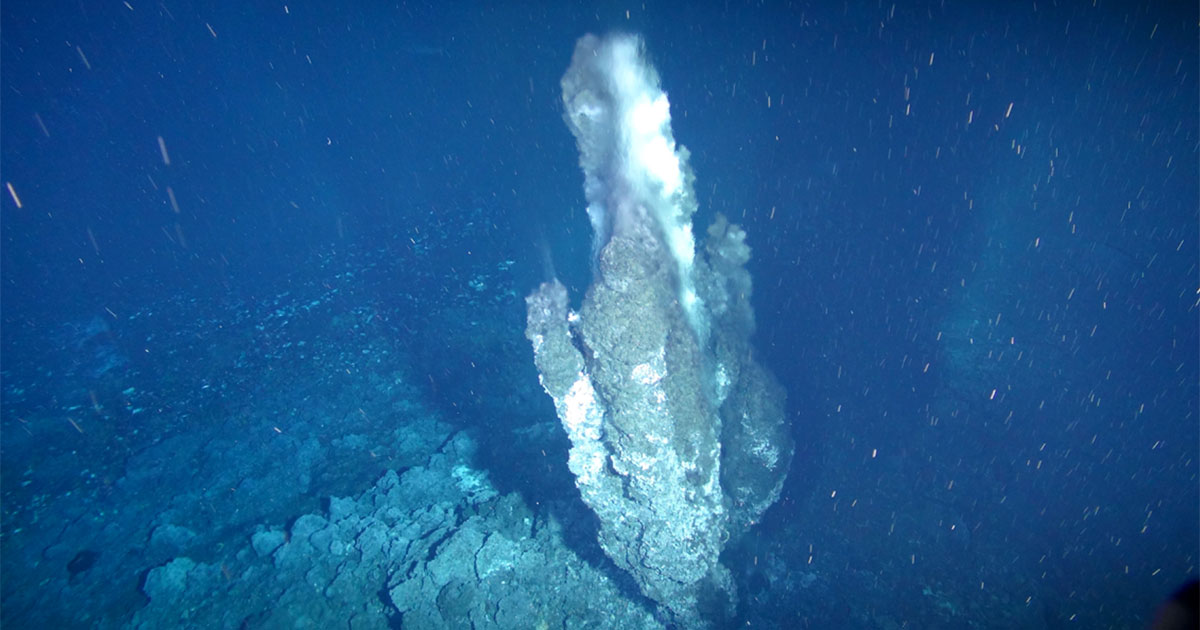The paper published in Nature Communications Earth & Environment shows that the nutrients iron and manganese are released in boiling water ejected from hydrothermal vents deep underwater and can reach the ocean surface where phytoplankton live. These metals boost a critical component of the Earth’s carbon cycle called the biological carbon pump, as phytoplankton use carbon dioxide from the atmosphere to grow, which is then trapped within the ocean.
The remote Southern Ocean is known to have a critical shortage of these nutrients, suppressing the rate at which phytoplankton can use and store carbon dioxide. It has been known for a long time that a primary source of the metals in the Southern Ocean is land dust. However, when studying water samples collected from December 2019 to January 2020 from the surface to the Southern Ocean’s seafloor kilometers below, scientists discovered an underwater plume of iron and manganese-rich water. Using state-of-the-art computer simulations, the team of scientists tracked the plume back to a source in the volcanic ridges crossing the Southern Ocean’s floor.
Chemical processes can gradually strip the metals out of the plume, but the simulations also allowed the team to show that it rises sufficiently rapidly to the surface to fertilize the Southern Ocean. Understanding the natural sources of these metals is vital for assessing the impact of proposed climate interventions such as artificial ocean fertilization.
Dr. Chelsey Baker, Ocean Biogeochemical Model Analyst at the National Oceanography Centre and joint lead author, said: “To avoid the worst outcomes of climate change, solutions have been proposed to enhance the oceans natural processes that remove carbon dioxide from the atmosphere. One suggestion is to fertilize places like the Southern Ocean with extra iron. However, we don’t fully understand the consequences of this for the ocean’s ecosystem. Knowing the natural sources of metals and how they support the biological carbon pump is crucial when assessing how effective such a direct climate intervention would be.”
Dr. Antony Birchill, Marine Biogeochemist at the University of Plymouth University and joint lead author said: “To find evidence for a new source of these metal nutrients in the Southern Ocean is very exciting. We already know that hydrothermal systems could be important from studies elsewhere but to find evidence for one deep in one of the most remote places on earth—a place which we also know is important for the biological carbon pump—is a major breakthrough.”
The research is part of the NOC-led and NERC-funded CUSTARD (Carbon Uptake and Seasonal Traits in Antarctic Remineralization Depth) project, which looks at how marine life influences the uptake and storage of carbon in the Southern Ocean. The CUSTARD project is part of the UK NERC Role of the Southern Ocean in the Earth System program. To find out more, visit: https://roses.ac.uk/about/
Read the full paper here: Pathways and timescales of Southern Ocean hydrothermal iron and manganese transport | Communications Earth & Environment (nature.com)

